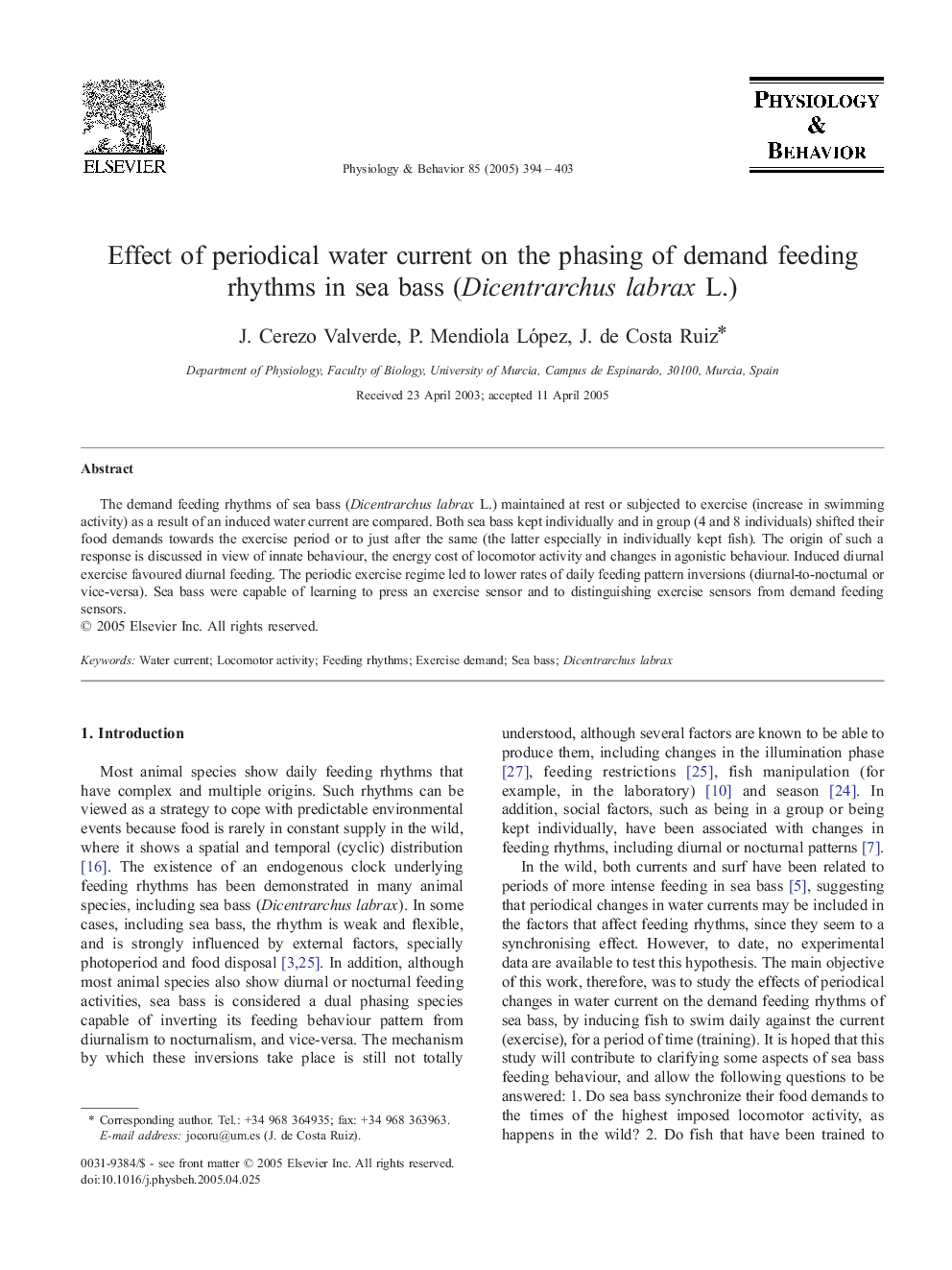| Article ID | Journal | Published Year | Pages | File Type |
|---|---|---|---|---|
| 9149783 | Physiology & Behavior | 2005 | 10 Pages |
Abstract
The demand feeding rhythms of sea bass (Dicentrarchus labrax L.) maintained at rest or subjected to exercise (increase in swimming activity) as a result of an induced water current are compared. Both sea bass kept individually and in group (4 and 8 individuals) shifted their food demands towards the exercise period or to just after the same (the latter especially in individually kept fish). The origin of such a response is discussed in view of innate behaviour, the energy cost of locomotor activity and changes in agonistic behaviour. Induced diurnal exercise favoured diurnal feeding. The periodic exercise regime led to lower rates of daily feeding pattern inversions (diurnal-to-nocturnal or vice-versa). Sea bass were capable of learning to press an exercise sensor and to distinguishing exercise sensors from demand feeding sensors.
Related Topics
Life Sciences
Biochemistry, Genetics and Molecular Biology
Physiology
Authors
J. Cerezo Valverde, P. Mendiola López, J. de Costa Ruiz,
